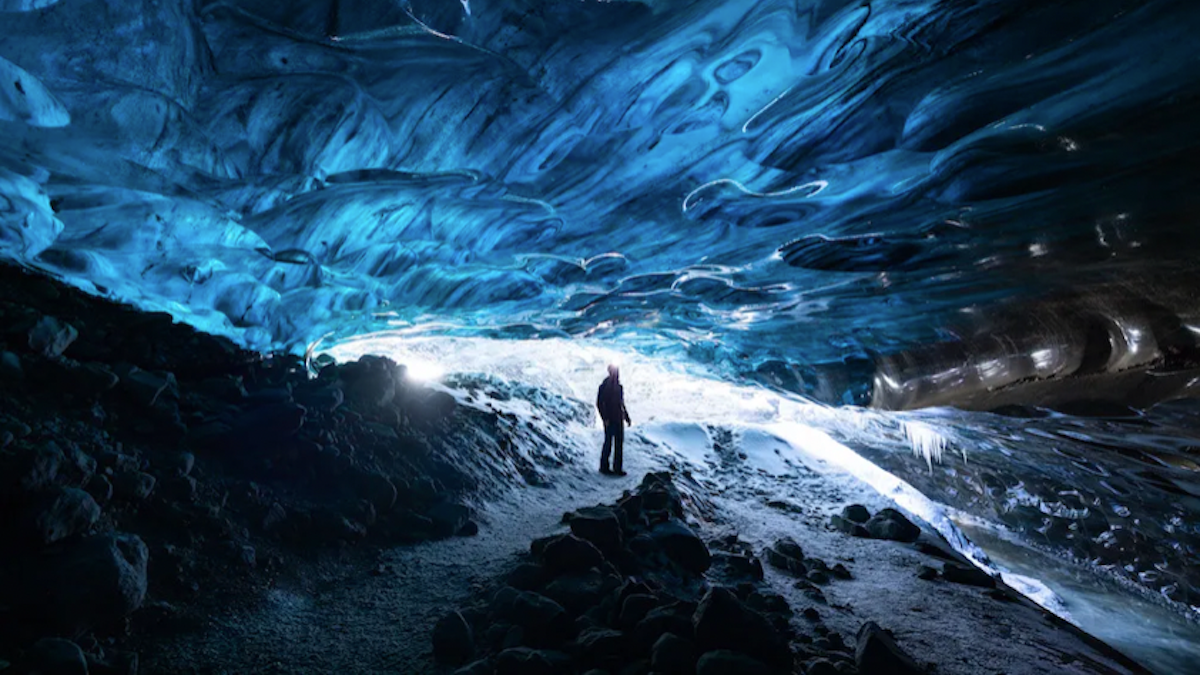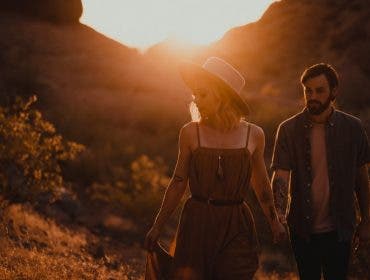If there’s a world destination that embodies a wild and rugged adventure, it’s Iceland. Located just south of the Arctic circle, Iceland has some of the most breathtaking photography opportunities on the planet. From jagged mountains, sprawling glaciers, powerful waterfalls, and even active volcanoes, to the unique and beautiful wildlife that call this island home, Iceland is a photographer’s dream.
While summer is typically the most popular season to visit, the winter season has its own advantages. If you plan to visit Iceland in the winter, this guide is for you. I’m going to walk through everything you need to know. This includes the best times to visit, top destinations and towns, equipment to bring, and more. This is the ultimate guide to winter photography in Iceland.

But before we get started, let’s talk about expectations and the weather.
Iceland — like many countries in this part of the world — faces some of the most unpredictable weather conditions on the planet. In the winter, the weather can include dangerous storms that can sometimes come out of nowhere. You can experience hurricane-level winds and blinding rain, sleet, and snow that can shut down the entire island for days. Therefore, it’s always good to be prepared and watch the weather constantly.
The website en.vedur.is is an accurate resource, including wind, precipitation, and preparing for any storms that may be forming. It even has an aurora forecast, if you plan to chase the Northern Lights.
With that said, if you’re planning a trip to Iceland, go into it with the expectation that the weather might not always be on your side. It’s important to stay flexible, stay safe, and plan your trip with enough time in case you’re stuck inside for a few days. Nothing goes 100% according to plan in Iceland, but that makes the adventure even more memorable.

Best Time to Visit
The best time to visit Iceland in the winter is February to March. It is incredibly dark from December to January, with only a few hours of sunlight each day thanks to the country’s close proximity to the Arctic Circle and North Pole. February and March sees far more sunlight but still provide longer, darker nights for peak aurora photography.
Another advantage to February and March are relatively fewer crowds and the chance to photograph some of Iceland’s biggest glaciers up close and personal. Whether it’s hiking on the glaciers or exploring deep inside them through breathtaking ice caves, both months are prime for glacier photography.
You can also check out Tips for Filming in the Winter and Snow.

Driving and Accessibility
Iceland can be completely circumnavigated throughout the year by its most famous highway, Highway 1, also called “Ring Road.” However, in the winter, it can get a bit more challenging the further north you go. Many of the two-lane roads that split from the Ring Road are closed in the winter. Roads can also close in a moment’s notice — or get very difficult to drive —due to snow and ice conditions. It’s important to always check updated road conditions and rent a reliable, high-clearance 4×4 or AWD vehicle so you can confidently drive.

Top Destinations and Towns
Here are some of the top destinations and towns to photograph in Iceland that are easily accessible in winter:

South Iceland:
- Reykjavik: Iceland’s capital and largest city, Reykjavik is colorful, eclectic, and beautiful to photograph — especially in the snow. Photographing the iconic Hallgrímskirkja Church in the city center is a must.
- Gullfoss: Probably the most famous stop along the popular Golden Triangle, Gullfoss is situated in the picturesque Canyon of the Hvita River.
- Bruarfoss: Considered to be Iceland’s Bluest Waterfall, Bruarfoss is a must in the winter time as the blue waters contrast beautifully with Iceland’s snowy, winter landscapes. It requires a 4.5 mile, relatively flat hike along the beautiful Brúará River to get there.
- Seljalandsfoss: One of the most famous waterfalls in Iceland, Seljalandsfoss is located right off the Ring Road, dropping 200 feet from the massive cliffs above. While the trail behind the waterfall is closed in winter, it’s still a fantastic winter photo spot in southern Iceland.
- Skogafoss: Skogafoss is arguably the most popular waterfall in all of Iceland — and for good reason. While it is one of the largest and most powerful waterfalls in Iceland, you’re still able to walk up right to the base of the waterfall, offering some incredibly powerful photo perspectives.
- Dyrhólaey Peninsula: TheDyrhólaey Peninsula offers expansive, endless views in all directions. It’s also perfect for both sunset and sunrise, with stunning views of Reynisfjara Black Sand Beach, sea arches, and sea stacks to the east and endless black sand coastline to the west. Since the road is closed in the winter, you have to walk a short distance to get to the top. Just be careful to stay in the fence boundaries, as several protected bird species nest on this peninsula’s dramatic cliffs.
- Reynisfjara Black Sand Beach: One of the most iconic destinations in all of Iceland, Reynisfjara Black Sand Beach is a must in winter time. The black sand beach and famous basalt column cliffs and sea stacks look stunning when contrasted with freshly fallen snow. Just be cautious in this area, as the waves are notoriously rough and dangerous sneaker waves have taken the lives of several tourists over the years.
- Vik: Vik is a famous, remote, seaside village, known for its coastal charm and beautiful red-roofed church perched high above the village below. It’s also surrounded by beautiful, jagged cliffs that turn snow-covered in winter. This town is a photographer’s dream.

East Iceland:
- Breiðamerkurjökull: This massive glacier — located in Vatnajökull National Park — is the glacier that feeds the famous Jökulsárlón or Glacier Lagoon. It’s one of the best glaciers to visit if you’re looking to photograph Iceland’s famous ice caves. You’ll need to hire a tour guide to legally and safely visit.
- Jökulsárlón aka Glacier Lagoon: Jökulsárlón is a glacier lagoon that is known for its calm, blue waters. It is typically filled with hundreds of silently floating icebergs — big and small. It’s especially stunning in the morning right around dawn.
- Diamond Beach: Diamond Beach is the famous black sand beach at the mouth of Jökulsárlón. Typically, in winter, you’ll see thousands of ice chunks that dot this beach and make it incredibly beautiful and unique to photograph.
- Vestrahorn Beach: Home to one of the most iconic and dramatic scenes in all of Iceland, Vestrahorn beach is a must. While the weather around this peninsula is difficult to predict, if you get a clear day here, take full advantage. This area is private property and requires a small fee to enter.
- Hvalnes Nature Reserve Beach: Around 45 minutes from Vestrahorn Beach directly off the Ring Road, Hvalnes Nature Reserve Beach is another stunning photo location with black sand beaches, rugged mountains, and one of Iceland’s infamous orange lighthouses.

North Iceland:
- Akureyri: Akureyri is Iceland’s second largest city and vibrant, cultural hub. Iceland’s “Capital of the North” offers several beautiful photo opportunities. It is also a great basecamp for visiting photo spots along the Diamond Circle like Goðafoss and Lake Myvatn.
- Goðafoss: While Goðafoss is beautiful year-round, it’s truly stunning in the winter. This powerful waterfall partially freezes to create beautiful icicles that hang from its tremendous drop. It’s also easily accessible, requiring only a short walk to the viewing platform.

West Iceland:
- Kirkjufell: Kirkjufell is one of the most iconic photography locations in all of Iceland and is the most famous landmark of the Snaefellsnes Peninsula. It towers above the surrounding landscape and it’s adjoining waterfall — Kirkjufoss — and is known as a fantastic spot to photograph the northern lights.
- Arnarstapi: Arnastapi is a picturesque village on the Snaefellsnes Peninsula. It was once a fishing hub and has since turned into a popular pitstop before entering Snæfellsjökull National Park. Arnarstapi is known for its rugged coastline, walkable sea arches, jagged mountains, and charming coastal houses.
- Búðakirkja: Iceland’s famous black church, Búðakirkja, sits alone in a lava field and is a stunning composition in the wintertime.
Important Camera Equipment to Bring
- A telephoto zoom lens like a 70-200mm, 100-400mm, or something equivalent, for landscape and wildlife photography
- A wide zoom angle lens, for landscape and astro/aurora photography
- A do-it-all lens, like a 24-70mm f/2.8 lens
- A drone for aerial content (Note: Before you fly, always familiarize yourself with local rules and restrictions and obtain any necessary permits or permission you may need)
- A durable, tripod for northern lights and low-light photography
- Circular polarizers to bring out as much color and contrast in your winter images as possible
- Fast memory cards with plenty of storage that can handle extreme temperatures
- A weatherproof camera cover
- A weatherproof cover for your camera bag
- Extra batteries for long days and nights, shooting in cold temperatures
- Portable power banks for phones and other electronics
Important Gear and Apparel to Bring
- Waterproof, insulated winter hiking boots
- Crampons/spikes for walking and hiking on snow and ice
- Hiking/ski poles for additional stability while hiking or walking
- Insulated hiking pants
- Base layers
- A warm mid layer, like a down or fleece jacket
- A weather-proof outer shell jacket
- Gloves, hat, and balaclava to keep your head and hands warm

Final Safety Precautions
Iceland is beautiful and rewarding to photograph during winter, but it is also wild and unforgiving. Once you leave Reykjavik and the more populated south, Iceland becomes increasingly rural and remote. This means mistakes can be costly. Always be prepared, be informed, and have all the gear and cold-weather clothing you need to stay safe. As stated above, it is highly recommended to rent a high-clearance 4×4 or AWD vehicle to avoid accidents or getting stuck in a bad place with no cellular service.
You can also hire a local guide if you need more knowledge and expertise when pursuing any of these winter photo locations mentioned in this guide.
I hope this guide to winter photography in Iceland inspires you to take a chance and explore one of the most beautiful, rugged countries on Earth. If you plan, prepare, and bring the necessary gear to make the trip successful, it will be an adventure you will never forget.






